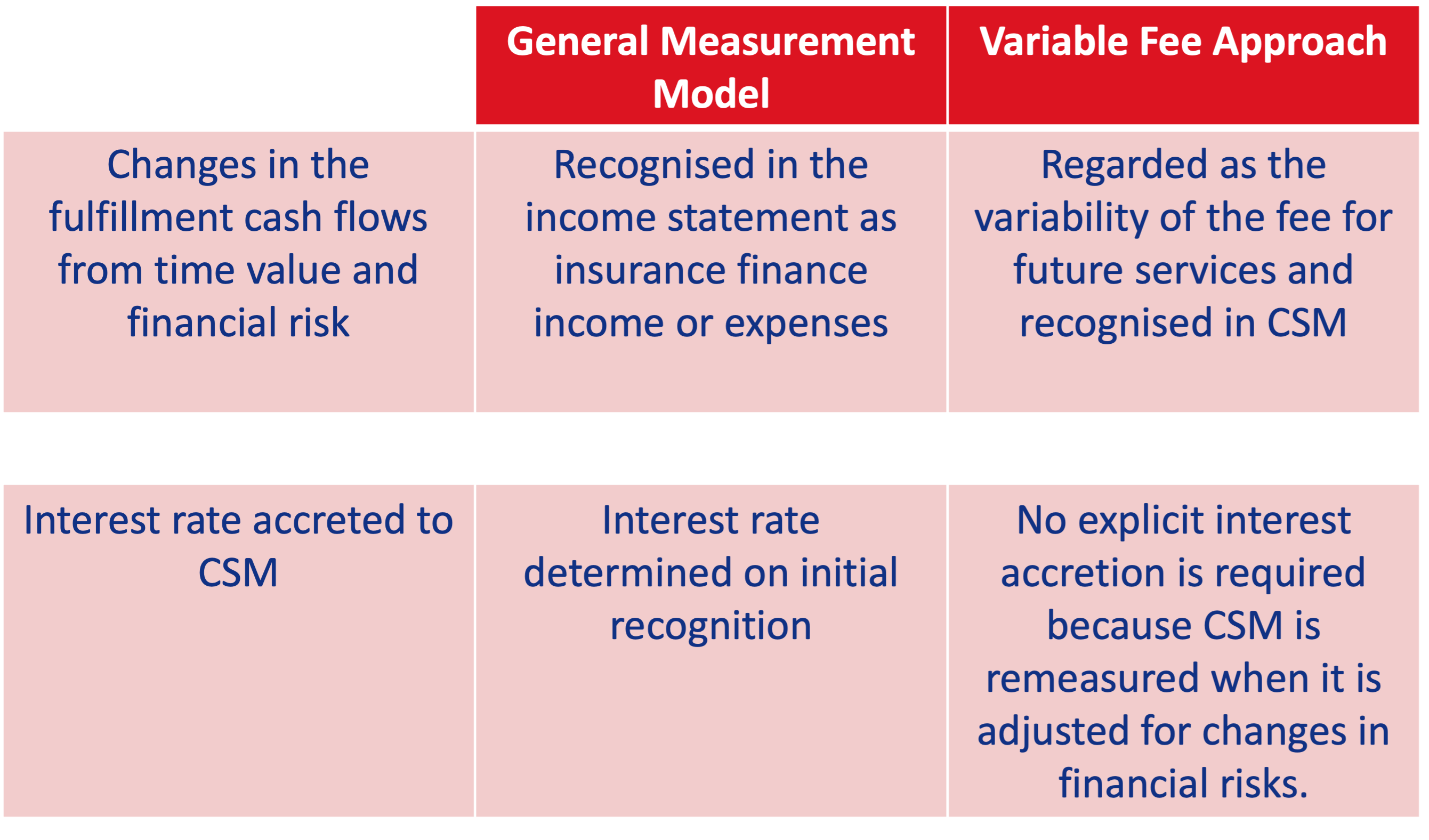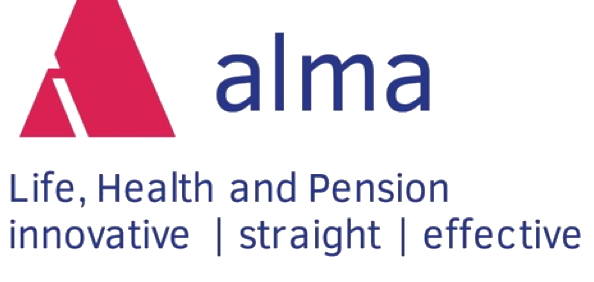
IFRS 17
2023 is a very important year for the insurance industry: The complex set of rules IFRS 17 will come into force on January 1, 2023, replacing the interim standard IFRS 4 Phase I, which has been in force since 2005. The new standard governs the principles of identification, recognition, measurement, presentation and disclosures for insurance contracts.
Alma will support the implementation of IFRS 17 in the insurance industry. Therefore, Alma will publish short and easy-to-understand articles on IFRS 17 from time to time.
Part 3: Some technical aspects
In this of the IFRS series, Alma would like to focus on some technical aspects that should facilitate the understanding and future handling of IFRS. Further descriptions and examples on technical aspects will follow in the future.
IFRS 17 addresses the treatment of technical provisions. It describes how they are to be calculated and how they are to be shown in the balance sheet and also in the income statement (P&L).
Here, it helps to take a certain change in perspective to understand IFRS 17:
- Under IFRS 17, insurance companies are regarded as service providers. They provide a service and receive a contractually agreed margin for it, the so-called Contractual Service Margin (CSM).
The CSM is initially recognized as a provision. It can be interpreted as the present value of future profits for future services. The realization presented in the income statement is in accordance with the service provision.
General approach: Building Block Approach
The Building Block Approach (BBA) is the essential part for the valuation of insurance obligations.
In this process, the obligations are determined by means of thefulfillment cash flows and the CSM is determined. The cash flows comprise expected, probability-weighted premiums, insurance benefits and costs.
Discounting is performed taking into account the time value of money, the characteristics of the cash flow and the liquidity characteristics of the insurance contract.
A risk adjustment must be taken into account. This includes the amount of compensation that the insurer would require for bearing the uncertainty of the cash flows.
The CSM is the expected and yet to be earned profit of the insurance contract.
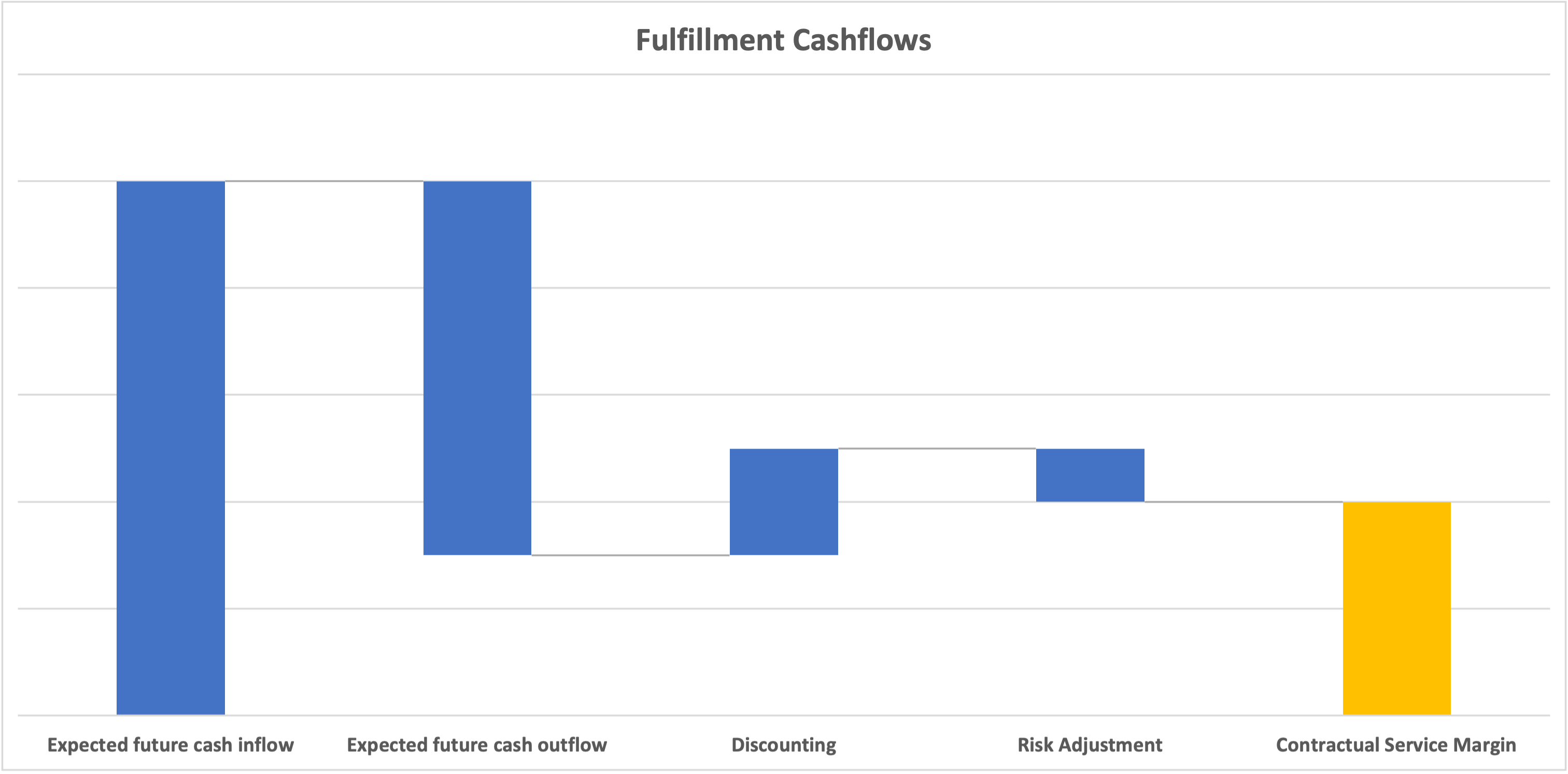
Balance sheet – simplified presentation
The balance sheet can be simplified as follows:
At the beginning of the insurance contract, no profit is recognized in the income statement. This will be realized in the future (deferral of profit in CSM). Certain buffers are provided to reduce volatility in the income statement. It is important to note that there are three methods with different methods:
- Building Block Approach(BBA)
- Premium Allocation Approach(PAA)
- Variable Fee Approach(VFA)
The technical provisions of a group of insurance contracts are made up of two parts:
- LRC – Liability for remaining coverage: Fulfillment cash flows related to future services plus CSM (unearned profit) remaining
- LIC – Liability for claims incurred: Fulfillment cash flows for claims incurred, but not yet paid.

Income Statement – simplified presentation
In simplified form, the income statement is presented as follows.
- No gross premiums are shown.
- The reinsurance result is shown explicitly.
- Clear statement of the outcome from the savings process.
- Possible presentation of the change in discount factors
The profits generated – income before taxes – are determined centrally by these factors(profit drivers):
- Realization of CSM and risk adjustments
- Experience variance: The deviations between expected losses and costs and those actually determined.
- Differences between investment income according to IFRS 9 and interest expense for insurance obligations
In principle, the following simplifications apply to the reporting of changes:
- Changes Financial risks: P&L or OCI
- Past or present services: P&L
- Future services: P&L (adjustment of CSM)
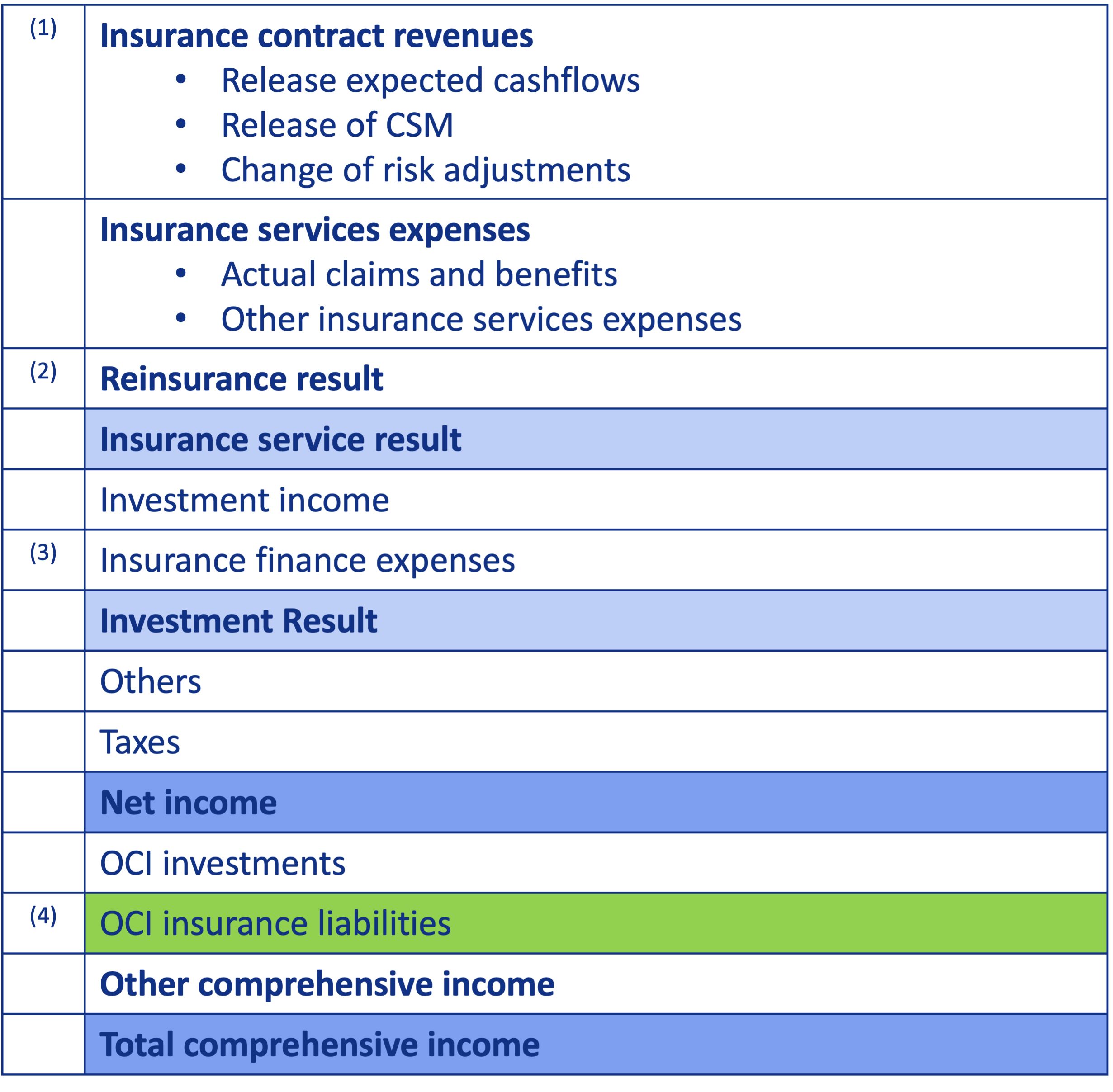
Premium Allocation Approach
The Premium Allocation Approach (PAA) is the preferred approach for non-life business.
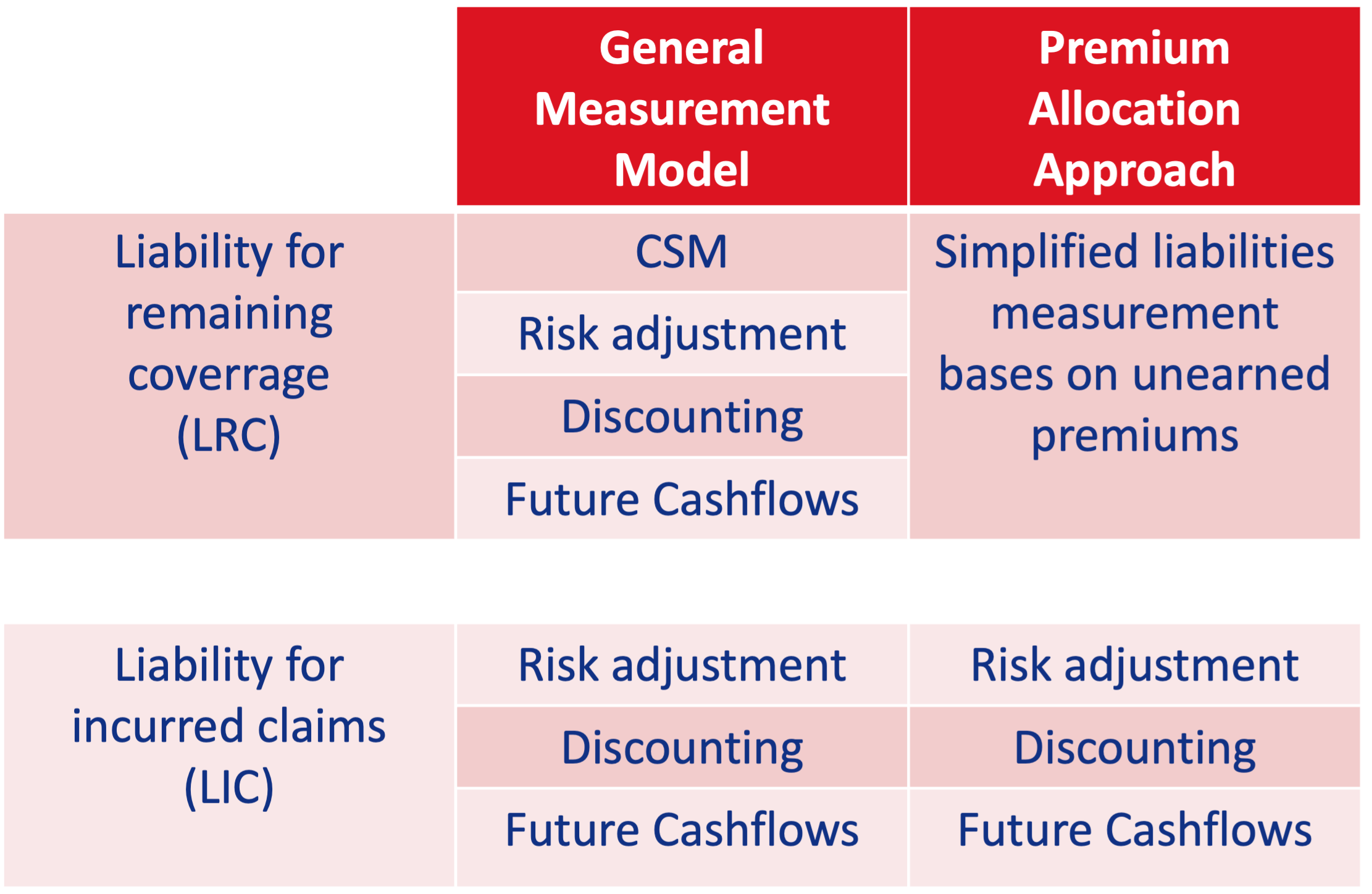
Variable Fee Approach – VFA
The variable fee approach (VFA) is the preferred option for life insurance business. It reduces volatility in the net income of the income statement.
